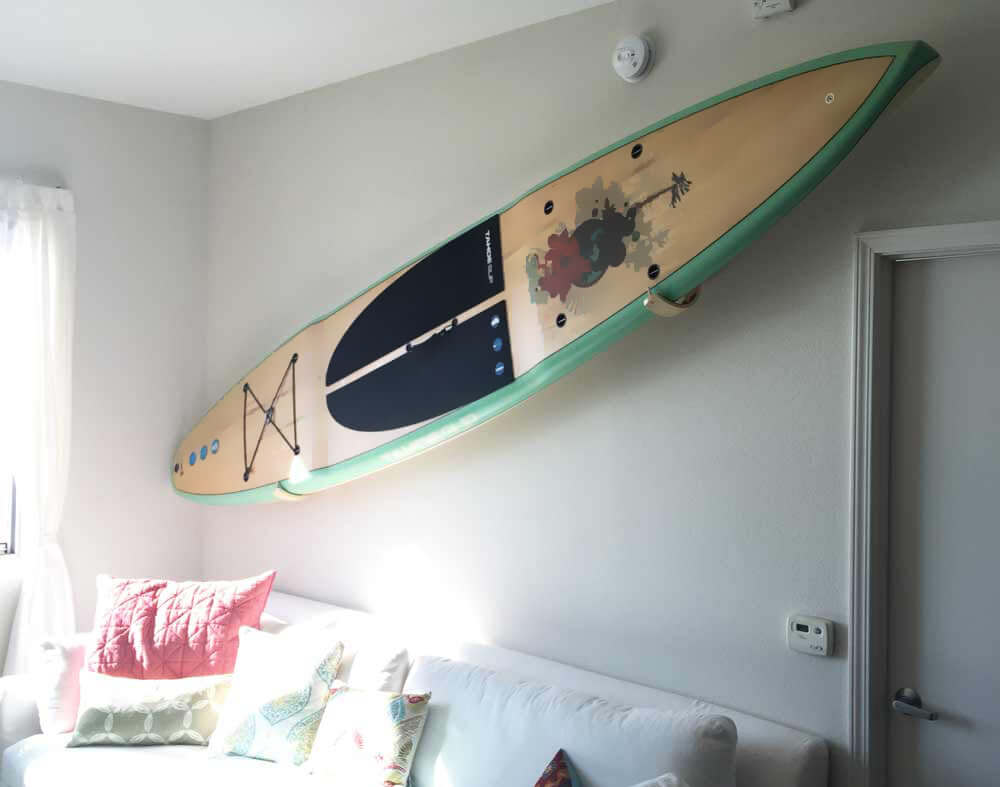
Ultimate Guide to Storing Your Epoxy Paddleboard Safely and Effectively
When it comes to enjoying the water, epoxy paddleboards are a popular choice for paddlers of all skill levels. Their durability, light weight, and sleek design make them an excellent option for enthusiasts looking to ride the waves or glide through calm waters. However, to ensure that your paddleboard lasts for many seasons to come, proper storage is paramount. In this guide, we will explore the best practices for storing your epoxy paddleboard safely and efficiently, minimizing wear and tear while maximizing its longevity.
Understanding the Importance of Proper Storage
Before diving into the specifics of storing your epoxy paddleboard, let’s discuss why proper storage is crucial. Paddleboards can be significant investments, and like any valuable equipment, they require care. Mismanagement can lead to chips, cracks, or warping, which could compromise your paddleboard's performance. Proper storage can:
- Increase the lifespan of your board
- Prevent damage from UV exposure
- Avoid deformation from improper stacking
- Keep your board safe during transport
Choosing the Right Storage Environment
First and foremost, where you choose to store your epoxy paddleboard plays a vital role in its maintenance. Here are some factors to consider when selecting a suitable location:
Temperature
Extreme temperatures can be detrimental to your epoxy paddleboard. Ideally, your storage area should maintain a consistent temperature, away from both intense heat and freezing cold. Avoid garages that experience significant temperature fluctuations, as these could lead to deformations over time.
Humidity
Humidity is another crucial factor. Ideally, store your paddleboard in an area with low humidity to prevent mold and mildew from developing on the surface. Humidity can warp the board and damage the construction materials.
UV Exposure
Ultraviolet rays from the sun can break down the materials in your paddleboard, leading to fading and deterioration. Therefore, it’s critical to keep your board out of direct sunlight whenever possible. Using a storage solution that shields your board from UV rays is highly recommended.
Best Practices for Storing Your Epoxy Paddleboard
Now that we understand the importance of the storage environment, let’s delve into how to store your paddleboard properly. Below are some best practices to follow:
1. Clean Your Paddleboard
Before storage, always clean your paddleboard thoroughly. Rinse it with freshwater to remove any salt, sand, and grime. This not only maintains a clean surface but helps prevent corrosion and degradation of the materials. Allow your board to dry completely before storing it to avoid trapping moisture.
2. Use a Paddleboard Bag
Investing in a protective paddleboard bag is an excellent way to safeguard your board during storage. These bags provide a layer of protection against scratches, dust, and other environmental factors. Look for bags that offer padding and UV protection to enhance the safety of your storage.
3. Store Upright or Horizontally
Depending on your space, you may choose to store your epoxy paddleboard either vertically or horizontally. Below are the advantages of each approach:

- Vertical Storage: Storing the board vertically can save space, especially in smaller areas. Ensure the board is secured against a wall or vertical rack to prevent it from falling.
- Horizontal Storage: If you choose to store your paddleboard horizontally, always place it on a soft surface like foam pads or blankets to prevent any dents or pressure points. Make sure it’s laid flat and not stacked under heavy objects.
4. Utilize Strap Systems
Using a strap system to secure your paddleboard while in storage can further enhance safety and prevent accidental tipping or falling. This method is especially useful for vertical storage, as it ensures the board remains stable and upright.
5. Avoid Tight Spaces
Ensure your paddleboard has enough room and air circulation around it while in storage. Avoid cramped spaces that don't allow for airflow, which could lead to unwanted moisture build-up and promote mold growth.
6. Check for Damage Regularly
After storing your paddleboard, it’s a best practice to check it periodically for any signs of damage or wear. Taking quick action can help prevent any serious problems or safety concerns later on.
Seasonal Storage Considerations
Depending on where you live, storing your paddleboard may vary with the seasons. If you experience harsh winter weather, consider the following tips to protect your board:
Winter Storage
In colder climates, it's essential to bring your paddleboard indoors for the winter months. Store it in a temperature-controlled environment to prevent freezing temperatures from causing fractures or damages. Make sure that it is away from any direct heat sources, like heaters, which can cause warping.
Recommended Storage Solutions
While exploring storage solutions for your epoxy paddleboard, consider multiple options depending on your needs and space. Here are a few popular choices:
- Paddleboard Racks: Wall-mounted racks are an efficient way to store your paddleboard while keeping it visible and easily accessible.
- Vertical Stands: Stands allow for upright storage and can be adjustable to fit different board sizes.
- Ceiling Hoists: If floor space is limited, ceiling hoists allow you to store your paddleboard overhead securely.
Maintenance Tips for Your Epoxy Paddleboard
Alongside proper storage, it's vital to stay on top of maintenance to ensure your paddleboard remains in optimal condition. Here are some maintenance tips to consider:
Regular Inspections
Make it a habit to inspect your paddleboard after each use. Look for scratches, dents, or any signs of wear. Addressing minor issues early can prevent larger concerns later.
Reapply Wax or UV Protectant
To further protect your paddleboard from the elements, consider applying wax or a UV protectant. This additional layer can offer extra protection against UV rays and prevent fading over time.
Store Accessories Properly
Don’t forget about storing paddleboard accessories as well! Paddles, life vests, and other equipment should also be stored safely and away from sunlight. Consider using bins or bags to keep everything organized.
Final Thoughts on Paddleboard Storage and Safety
Storing your epoxy paddleboard properly is irrefutably essential for ensuring it remains in excellent condition throughout the years. By maintaining a suitable environment, implementing best storage practices, and staying diligent with regular maintenance, you can enjoy endless adventures on the water without the worry of damaging your investment. Remember, the care you take with your paddleboard goes hand in hand with ensuring your safety on the water. Happy paddling!


















































